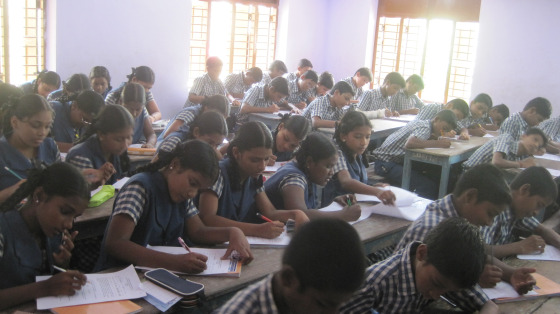I study Global Health at Arizona State University and currently have the incredible opportunity to intern with Arizona Family Health Partnership this year. I am very interested in international medicine and reproductive healthcare, and I hope to pursue these areas in my future studies and vocation. Last summer I had the opportunity to travel to Chennai, India, to spend 8 weeks volunteering with a group of 20 students from both ASU and U of A. We worked with the International Alliance for the Prevention of AIDS (IAPA) to deliver HIV/AIDS education in high schools and colleges. I’m happy to share my experiences in India about the way that reproductive health work is carried out in a broad global context.

We met amazing students every day who were curious and knowledgeable and ready to impact their communities with knowledge about HIV.
The purpose of the IAPA program and teachings is to reduce the transmission of HIV as well as the stigma surrounding HIV and AIDS. Over the two month period we visited dozens of high schools and colleges to provide interactive teachings. Some of the time we taught directly in English, but in more remote schools we worked with local counterparts to communicate in the local language, Tamil. The approach of the teaching is to explain that HIV and AIDs is a global issue that has no cure but is 100% preventable through knowledge about the virus. We engaged with the students about what they think about the virus, then explained the biology behind transmission, methods of prevention and protection, and the importance of getting tested. What I love about this program is that the power to work towards a healthier world resides in education. One of my group’s catchphrases was that we shouted “knowledge is” and the students shouted “power!”

At the beginning of every teaching we wrote “Knowledge is power” on the board and had the students repeat it throughout the lesson.
We taught that HIV does not discriminate based on gender or caste, that shaking hands with a person doesn’t transmit it, and that there are treatments to lead a healthy life with HIV. One of the most important sections we call “doors and fluids,” where we taught the kids the body fluids that can transmit HIV and the body openings where it can enter. During that section, we had the students loudly repeat each of the doors and fluids. Compared to the dearth of sexual education provided in Indian schools, our content was a lot more in-depth than the students have experienced in an academic setting. One of our favorite activities was leading the 14-year-old kids in shouting “BLOOD! SEMEN! PRE-EJACULATE! VAGINAL FLUID! MOTHER’S MILK!” to remember the information.

Acting out the immune system. We would call students up to play the role of pathogen, macrophage, T-cell, B cell, and antibodies.
Working with a counterpart (CP) to deliver the information in two languages was challenging but important for inter-cultural education. I initially assumed the CPs role was to translate what we said so to fill in the gaps in the students’ understanding of English. Rather, together we participated to communicate the subject matter in two different languages, with different accents and characteristics and inflections. Sometimes I wondered why the Americans are necessary if all of the information can be taught directly in Tamil. Of course the CPs could deliver the teaching directly in Tamil without any English, and the students would understand. In fact, during the other months of the year the program does operate locally like this. But by working together, we represented the prevention of AIDs from an international perspective.
Last summer I learned a lot about the challenges and successes of prevention education – but ultimately came away from the experience more passionate about contributing to this kind of empowering work on both a global and local context.
– Annie, Intern at Arizona Family Health Partnership




